Would it be possible to transform barren, sun-baked deserts into lush oases teeming with life—all while generating clean energy? This seemingly impossible feat might be a reality sooner rather than later.
A pioneering study from the Xi’an University of Technology has shown that industrial-scale solar farms in desert areas can actually improve soil quality, boost vegetation growth, and create a healthier microclimate.
So far, this challenges the common perception that huge solar parks destroy their surrounding ecosystems.
Today’s Focus of Attention is reader-supported. We sometimes include products we think are useful for our readers. If you buy through links on this page, we may earn a small commission.
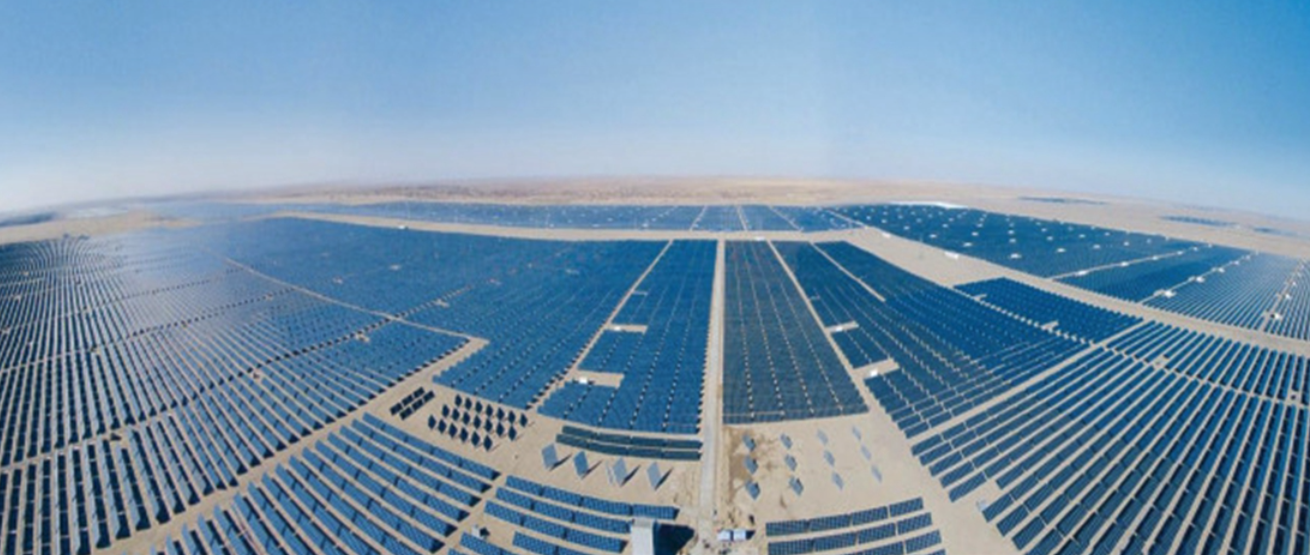
To arrive at this conclusion, researchers employed the European DPSIR model to analyse the environmental impact of the Gonghe Photovoltaic Park in Quinhai Province, China.
This massive one-gigawatt solar farm, located in the Talatan Desert, demonstrates the synergy between solar energy and barren ecosystems.
With the DPSIR, the team quantified the positive effect of the panels with the following results:
- Areas under the modules: 0.4393
- Transitional zones: 0.2858
- Desert beyond the facility: 0.2802
Solar Farms: Effects on Soil and Climate
When the sun is high and scorching the land, tree canopies offer shade, creating a circular oasis that stands in stark contrast to its surroundings.
With a similar effect, solar panels covering big swathes of desert create immense shaded environments that:
- Reduces soil temperature and evaporation.
- Increases humidity levels.
- Supports the proliferation of microorganisms.
- Promotes the growth of plants and nutrient-rich soil.
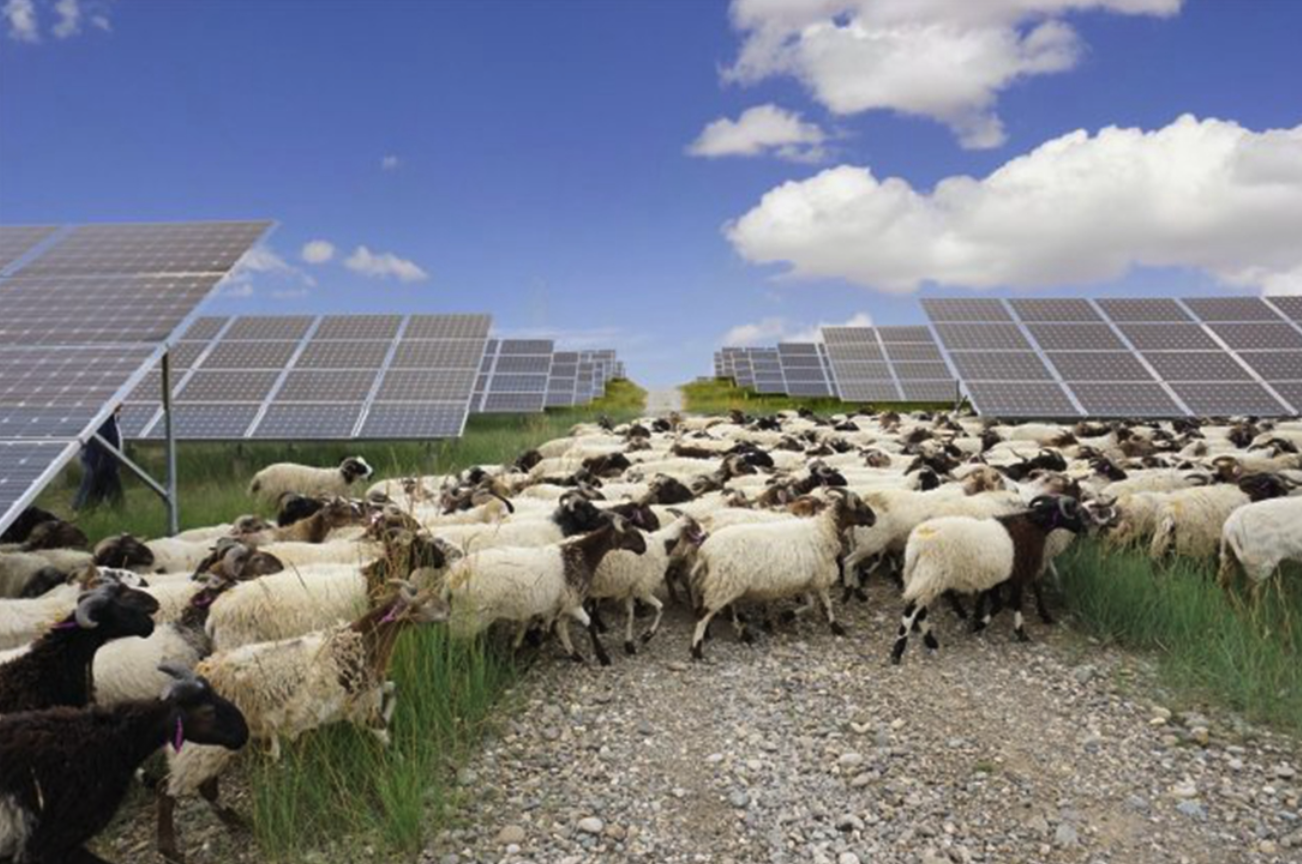
The university’s study points out that solar facilities are able to support biodiversity and foster more hospitable habitats.
Even though these findings are promising, they’re not a panacea to transform deserts into forests.
To fully grasp the impact of zero-carbon power in desert zones, we must be sure that large-scale solar projects maximise benefits and minimise potential downsides, such as water depletion or habitat loss.
Ecological Trade-Offs of Solar Farms in Arid Regions
Solar arrays offer significant rewards for renewable energy production, but they are not without eco-costs. Here are a few of them:
Disruption of Native Ecosystems
These enormous facilities alter the natural habitat for endemic species. For instance, reptiles and small mammals rely on open sunlight or sand for survival. The shade from the panels may force them to move.
Water Usage for Cleaning
To maximise efficiency, PV panels need regular washing, which consumes a deluge of water. Such a process strains the already scarce water resources in desert environments.
Again, this is not to belittle the advantages of solar power. By evaluating the ecological give-and-take, we can figure out why it’s key to address any drawbacks as solar energy expands in dry regions.
Heat Island Effect
Scientific evidence shows that extensive solar arrays slightly increase temperatures in surrounding areas because of the reduced airflow caused by the photovoltaic modules.
Moving on, let’s look at how agriculture blends with sunlight power.
Case Study: Farmer in Colorado Confirms the Benefits of Solar Panels
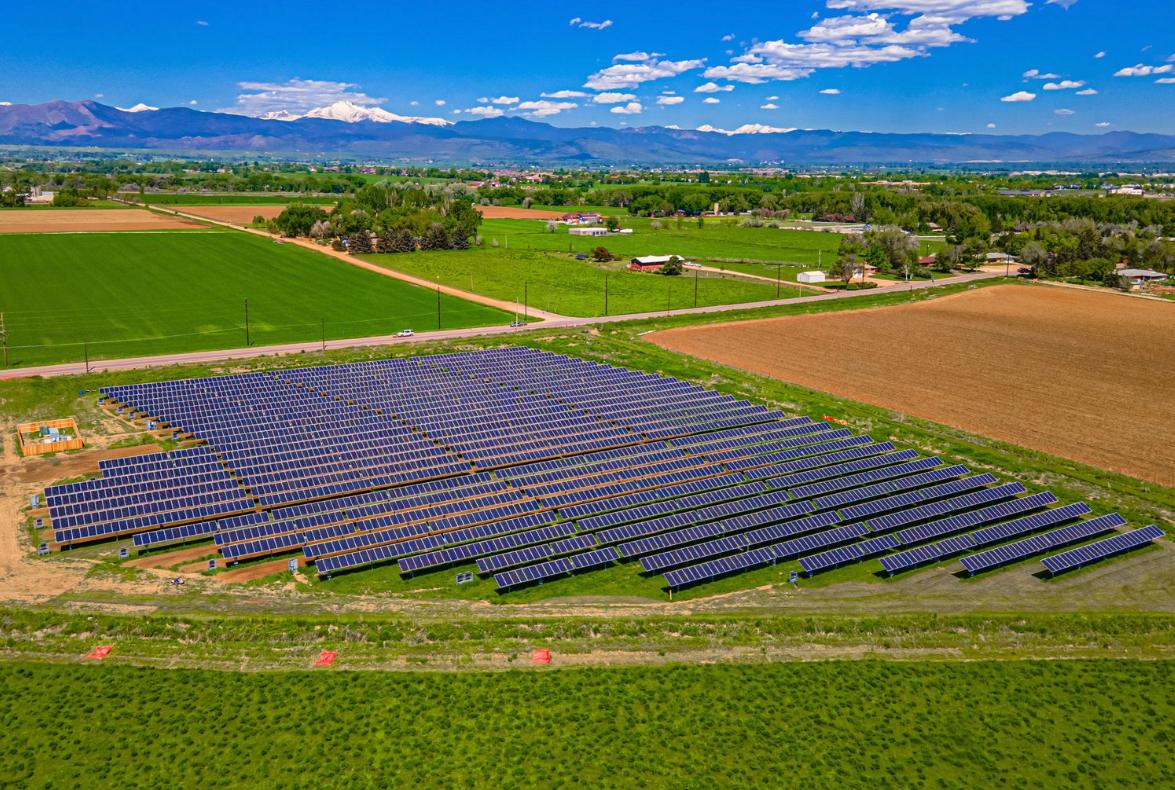
For over 50 years, Jack Stinger ran Longmont Farm, nestled in the heart of Boulder County, Colorado, focusing mainly on the growth and sale of hay. However, this monoproduction system proved no longer profitable, and the land was left idle.
Stinger handed over the farm to his grandson Byron Kominek, who promised to bring new life to the 24-acre property. He figured out a neat way to combine solar energy with farming: agrivoltaics, the practice of co-locating solar panels and agriculture.
Before receiving the cropland, Byron knew nothing about agriculture but was versed in forestry and wildlife conservation. For over six years, he lived in Africa working for USAID; this background laid the foundation for what came next.
In 2020, Byron established the Jack’s Solar Garden, a 1.2-megawatt solar farm that merges crop cultivation and renewable energy production. At the same time, he founded the Colorado Agrivoltaic Learning Centre (CALC), a nonprofit organisation focused on educating the public on the benefits of combining sunlight power and agriculture.
The solar panels in Longmont Farm helped:
- Sheep, ducks, and geese graze under the refreshing shade.
- Young seedlings stay protected from harsh sunlight.
- Improve soil moisture retention.
- Reduce water usage across the farm.
- A more comfortable work environment for farm labourers.
Jack’s Might
The Garden’s 3,276 panels generate enough energy for 300 homes and make Byron earn around $20,000 per year.
Agrivoltaics gives farmers the alternative to profit from their crops and with power generation. This is a win-win viable land-use option.
“If there’s just one in the country, it’s easy to dismiss, but when there are thousands of them, people are more able to go out, learn about it, and figure out how they can do it.” Byron Kominek.
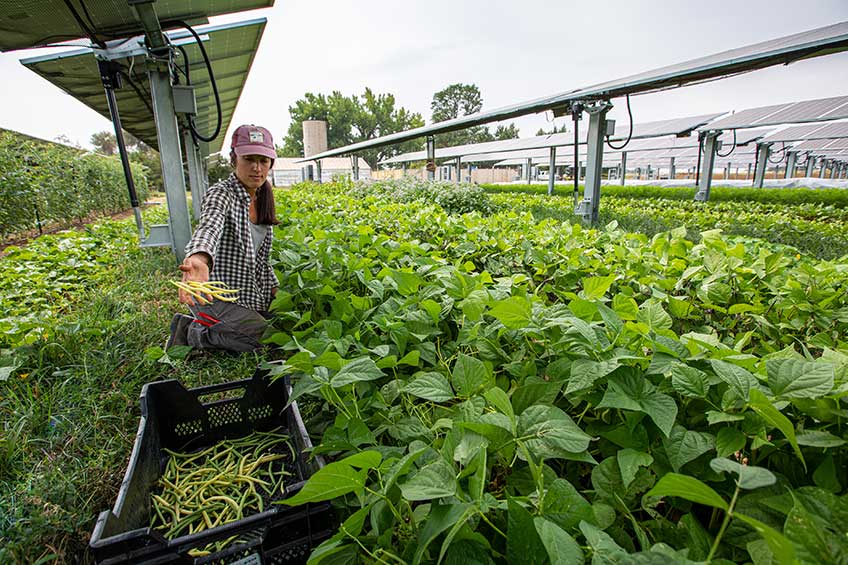
Here’s another example of how solar energy drives transformation.
Kubuqi Desert Solar Array
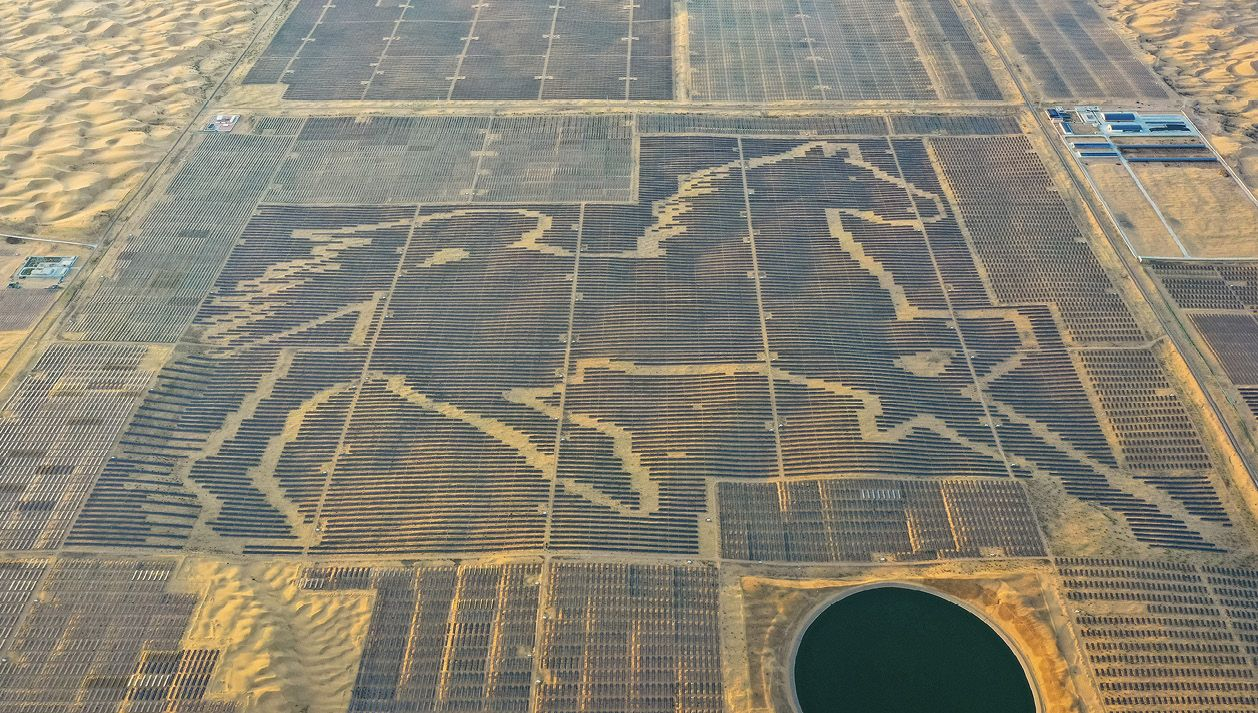
A photovoltaic sea with over 3.4 million panels is turning this parched zone into a more fertile territory in Ordos city, Inner Mongolia, China.
In the 13th century, while travelling along the Silk Road, Marco Polo called this area a “sea of death.”
Today, however, the millions of shining blue thermal collectors are transforming the region by:
- Cooling the sand dunes.
- Stabilising sand to prevent it from encroaching on nearby fields.
- Retaining moisture for longer periods.
- Allowing plants to flourish.
The Kubuqi Desert Solar Array will be the world’s largest when finished in 2030 and is planned to extend 400 km with an average width of 5 km.
To date, this facility produces 5.42 gigawatts (enough to energise 400,000 homes). But upon completion, it’ll reach 100 gigawatts, which authorities believe could power all of Beijing.
Interestingly, this energy field relates to Byron Kominek’s land.
In September 2024, China Daily reported that locals from the city of Ordos are planting crops underneath the solar panels, which rise 2.5 metres from the ground. Also, farm animals are grazing under their protective shade.
But this region creates not only solar energy.
Researchers discovered extensive deposits of uranium in the Ordon Basin, allowing China to produce more nuclear energy. But there’s always a downside. Exploiting uranium poses major environmental challenges. To illustrate, mining kills habitats, makes water unsafe for human use, and produces radioactive waste.
Thus, China must implement strong rules to avert these risks. If not, the damage that digging operations cause will mask all the advantages that solar farms are bringing to this environment.
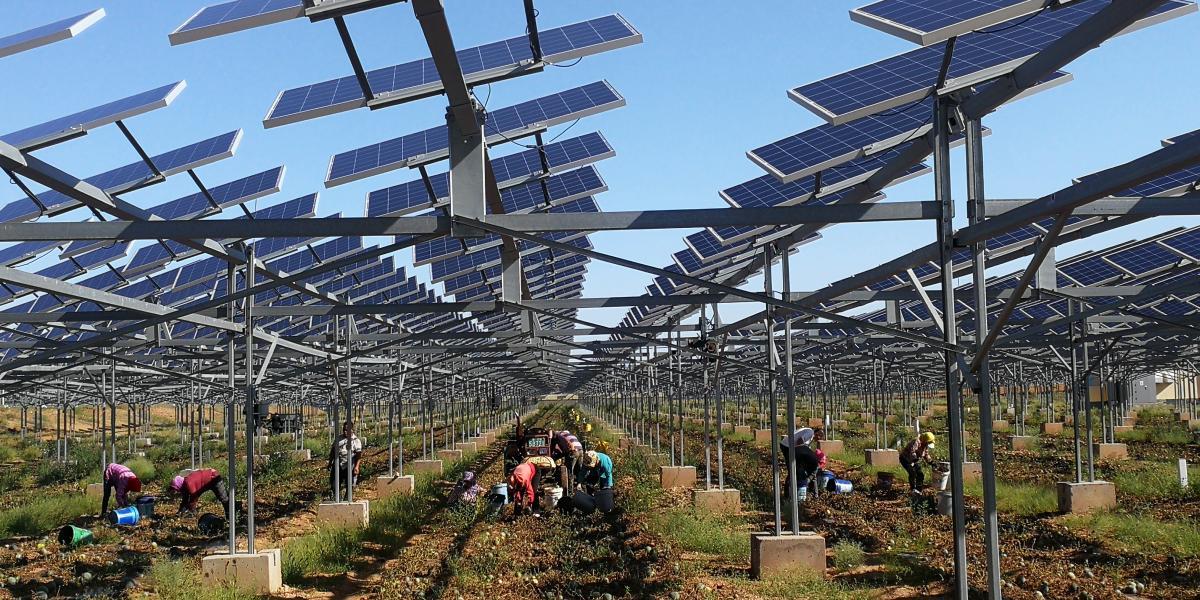
With no doubt, solar energy is phasing out our reliance on fossil fuels and reducing greenhouse gases, which exacerbates climate change.
Before I forget, for those who believe climate change is a hoax, at least we agree that pollutants coming from fossil fuels poison nature. Am I right?
Anyhow, the downside of harnessing sun power is the waste that’ll pile up from the millions of panels once they reach the end of their useful life.
- Will companies discard them into landfills or oceans?
- Is there any chance of recycling, reusing, or repurposing?
- Can we recover valuable materials from used cells?
What are your thoughts on this? We’re keen to have your views on the environmental impact of solar farms as a whole to have a well-rounded discussion on this topic.
Don’t forget to share this post.


